By Dan Weisz
Here are some photos taken at a few different sites in recent weeks:
This was a big surprise: Sandhill Cranes in the agricultural fields near Picacho Peak! Sandhill Cranes are common in the winter in southern Arizona but are seen primarily south of Wilcox in the Sulphur Springs Valley. There, they forage for waste corn in the stubble fields. Not sure how this small group ended up about 70 miles from the other tens of thousands of cranes in Arizona. They must have been flying while texting or something.
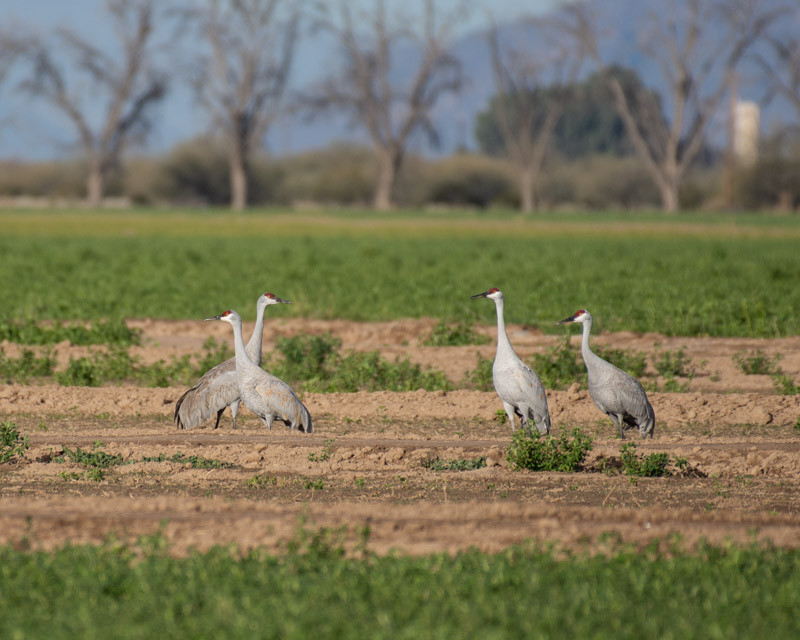
Another bird that we associate with water and wetlands is the Great Blue Heron. These, however, are not uncommon in agricultural fields and do live in southern Arizona year-round. Great Blue Herons are about four feet tall with a six foot wingspan. These are very large birds!
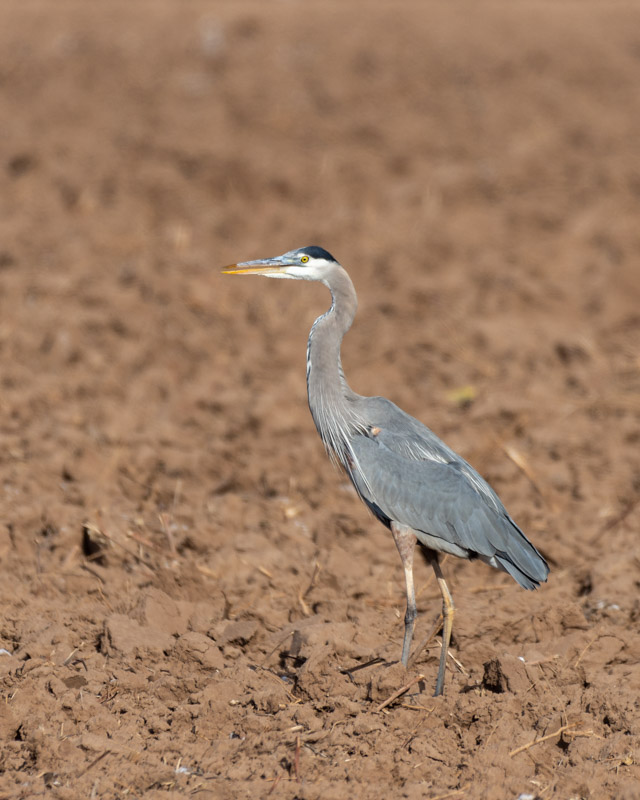
We saw a pair of Common Ravens chasing a Crested Caracara. I’m not sure why but the ravens were persistent and one raven even kept a pecan in its beak while flying. The ravens were very aggressive during the chase until they felt the caracara was far enough away.
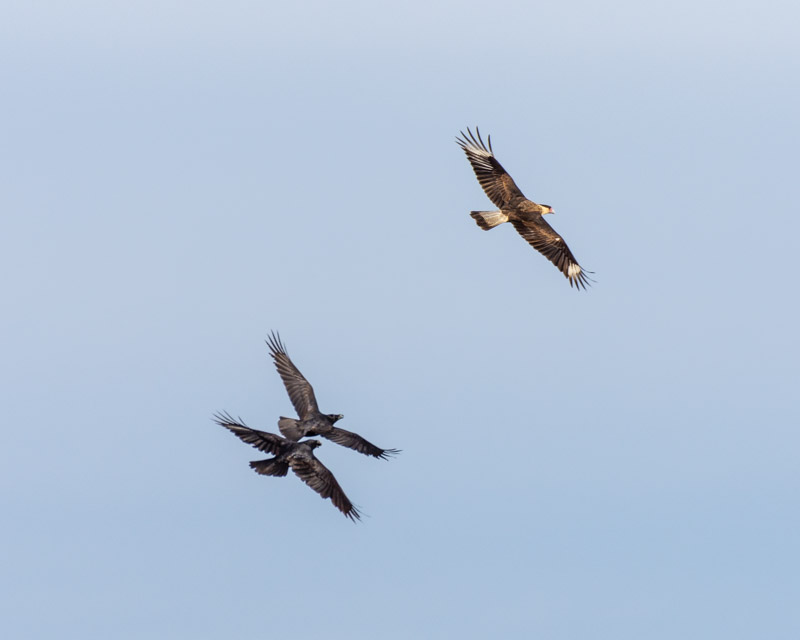
I’ve been able to see a male Northern Harrier a few times recently. This “Gray Ghost” was hunting very low over the fields in long flights. This is the only clean shot I got of him as he flew away. I like how his eye is peeking over his shoulder as he leaves the area and he seems to be looking back at me.
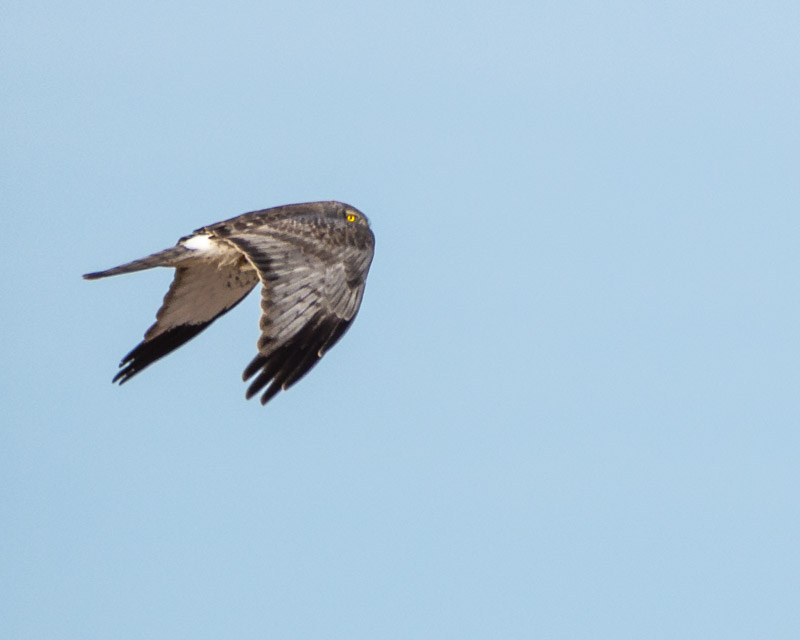
A female American Kestrel was puffed out to stay warm against the morning chill
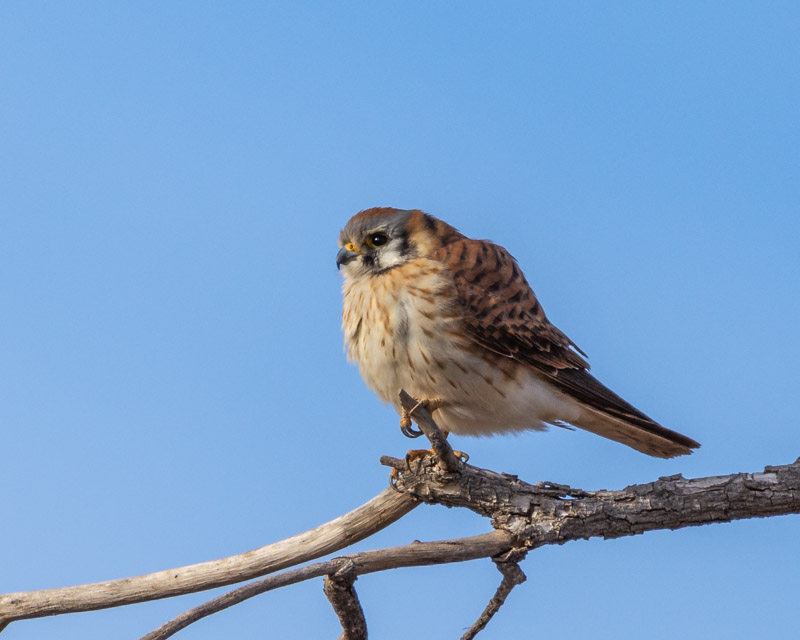
This Kestrel was hunting and flew right over us at one field.
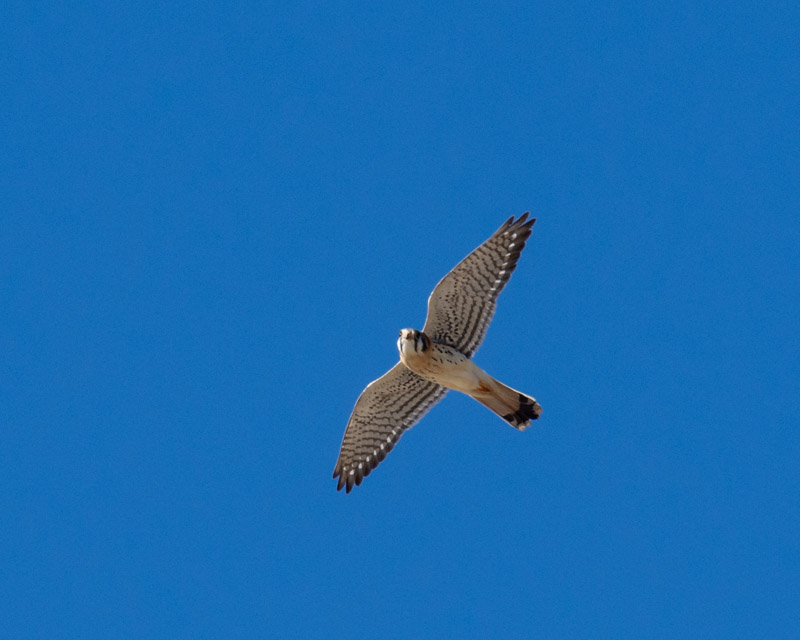
In the Foothills, a Black-tailed Gnatcatcher was busy flitting around in a creosote bush. These gnatcatchers forage very actively on the lookout for insects. They are a bird of the desert southwest.
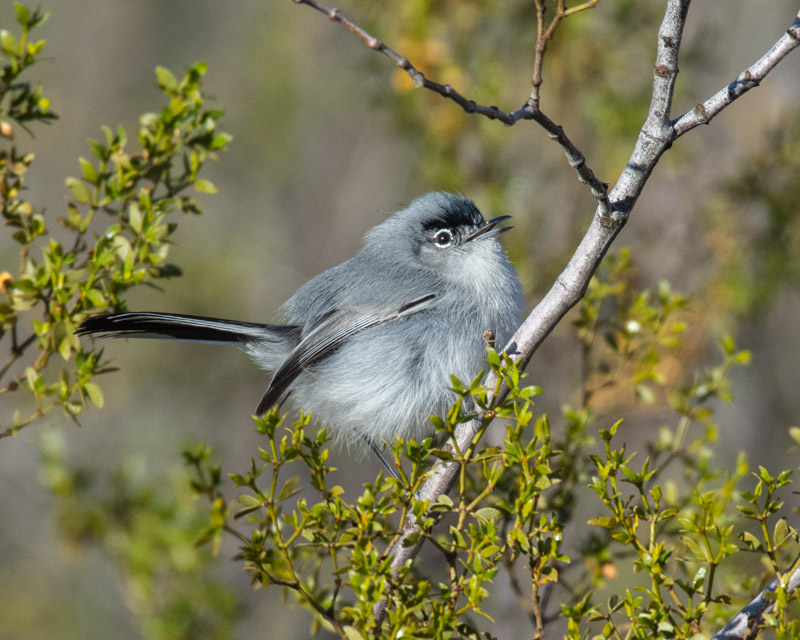
A Costa’s Hummingbird at rest on the ends of dead ocotillo branches.
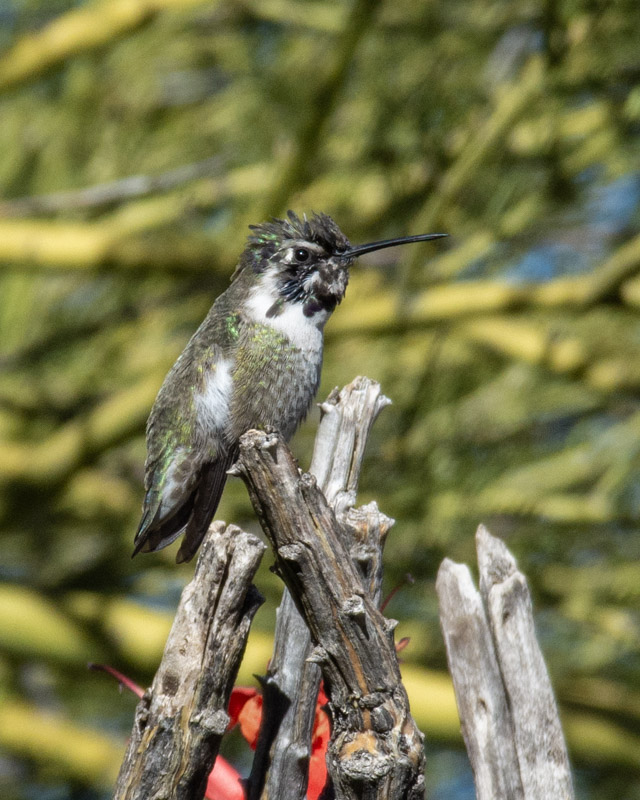
Several male Western Bluebirds were hanging around the eastern pond at Agua Caliente Park. They are irregular winter visitors here in the Tucson area.
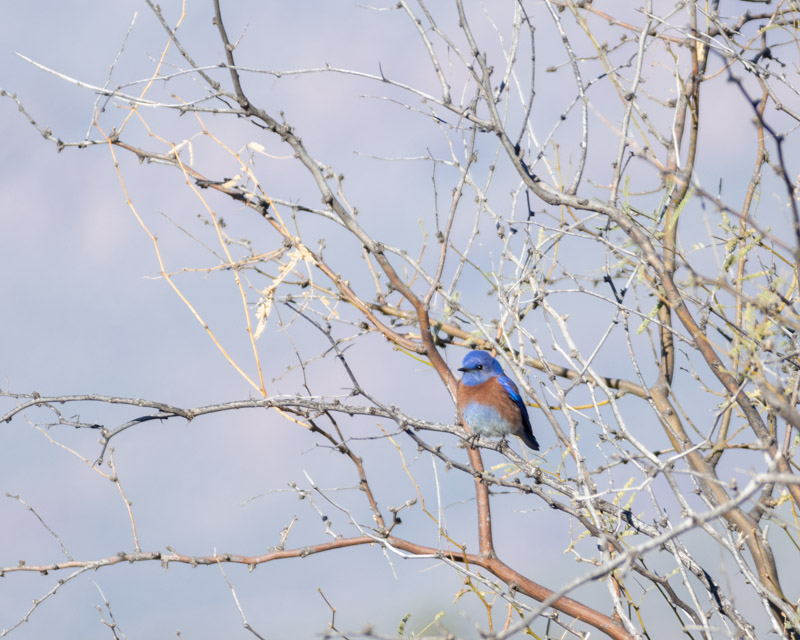
Back at Sweetwater Wetlands, there are many different types of visitors at the park. I don’t see these folks wearing binoculars.
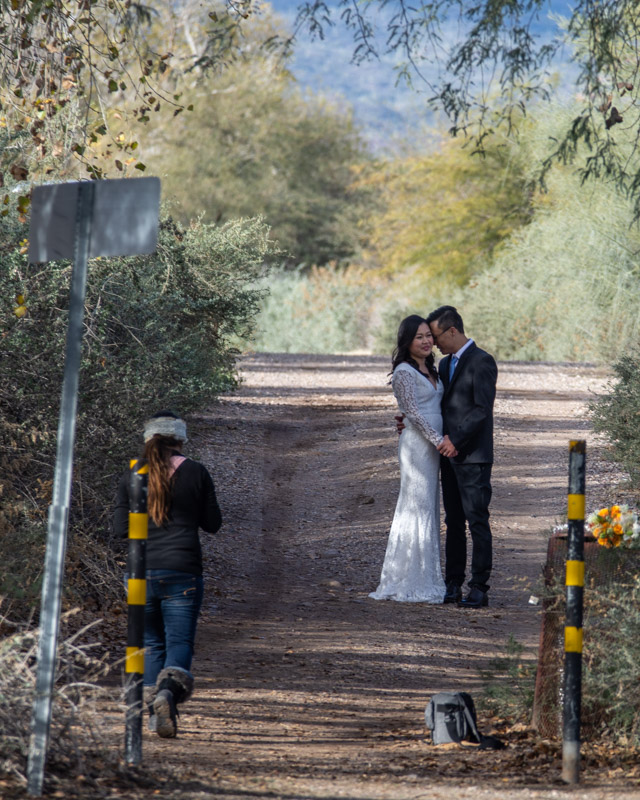
A Song Sparrow doing what Song Sparrows do: singing from a high perch atop a cattail.
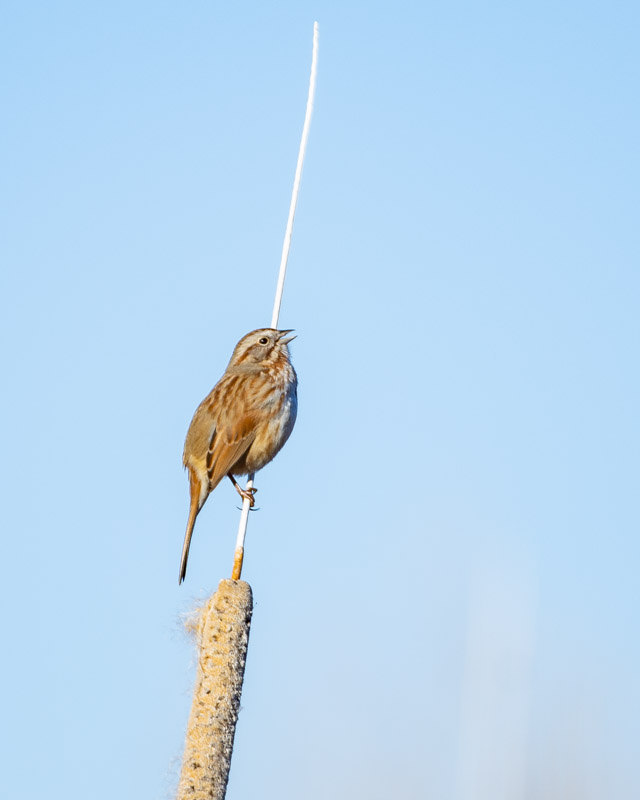
Lower in the cattails was a regular desert resident, the Verdin. This small bird is distinctive with his yellow head and rusty shoulder patch.
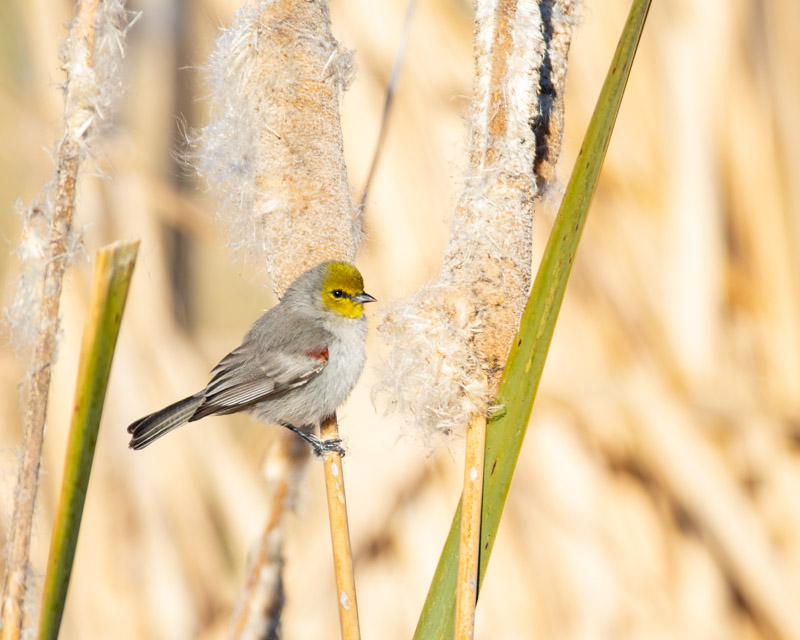
A Black Crowned Night Heron has staked out a spot in one pond and remained there for weeks now. There must be good food in that pond and the heron will stand motionless waiting for its prey to come close enough. Those long white plumes on the back of his head are part of this bird’s breeding plumage. With its neck tucked in, these stocky birds look hunchbacked. Black-crowned Night Herons live in the Tucson area year-round.
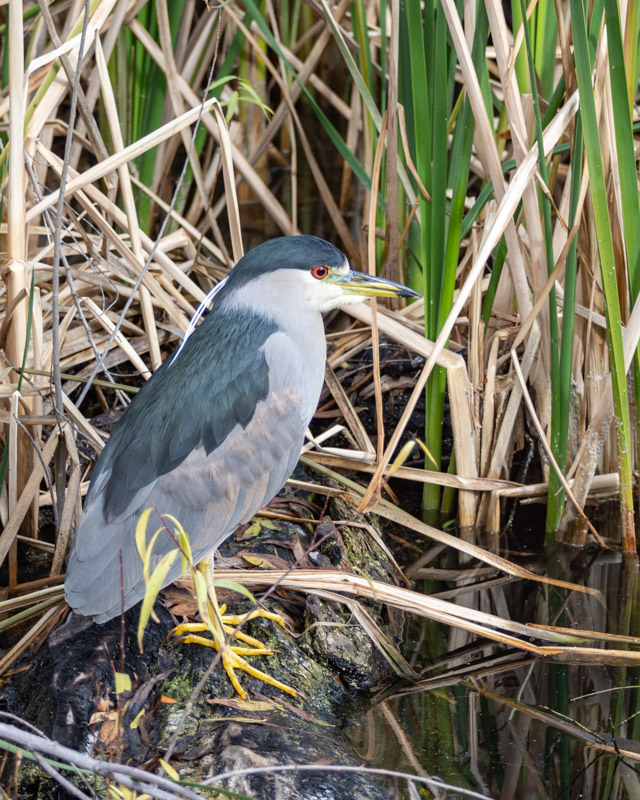
Snowy Egrets also show up in the wintertime. These birds have immaculate white plumage set off by their black legs and yellow feet.
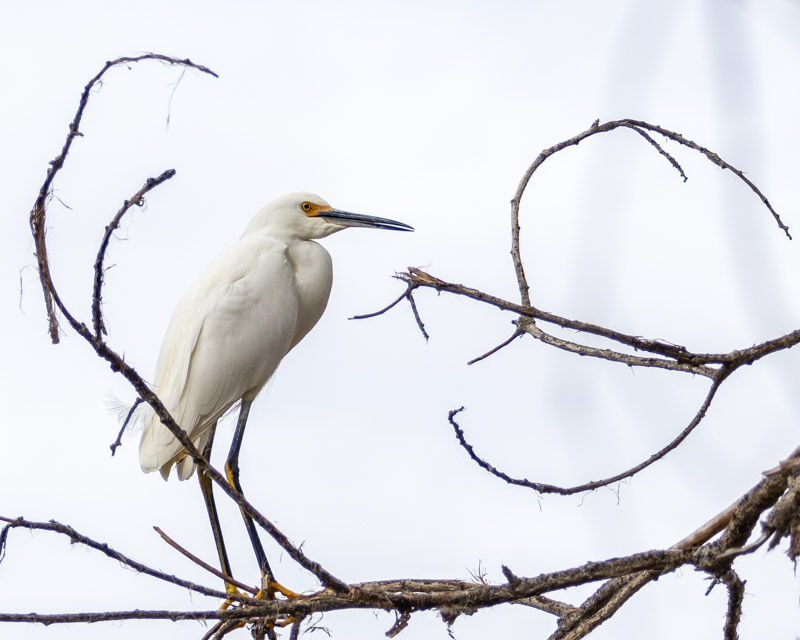
The final bird in this collection was a Peregrine Falcon seen at Sweetwater Wetlands. Peregrines are seen during the winter in that area along the Santa Cruz River. The bulge at its throat indicates a full crop so the bird must have eaten recently.
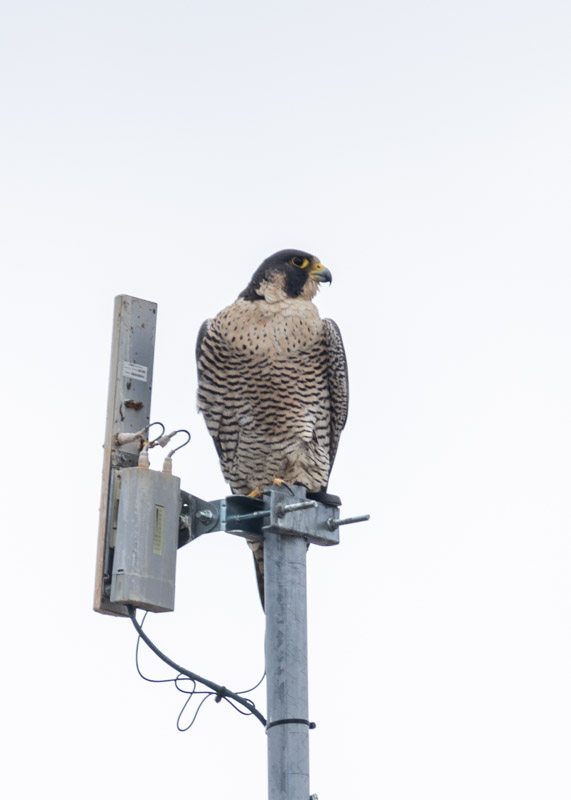
Next, the bobcats.
